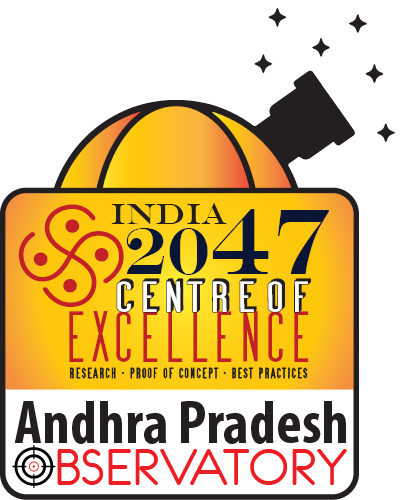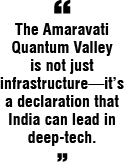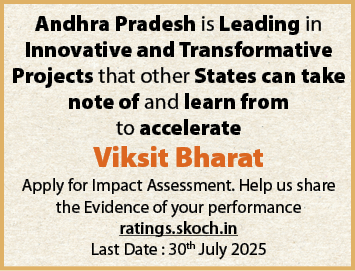Emerging technologies are revolutionizing the world and transforming every aspect of life and society. In this regard, artificial intelligence currently has the spotlight, with each generational update delivering exponentially better results and features. Yet, advancement in another technological realm is poised to redefine economic power, national security, and scientific discovery on a scale comparable to the dawn of the digital age.

In an era where artificial intelligence captures the world’s attention with its rapid evolution and spectacular capabilities, another quieter revolution is gathering force. It doesn’t speak in the language of generative images or chatbots, but in the whisper of entangled particles and probabilistic states. Quantum technology—leveraging the strange laws of quantum mechanics—is no longer a theoretical curiosity; it is poised to reshape the global balance of power, economic structures, and scientific breakthroughs.
Across the world, countries are locking horns in a fierce competition to lead this new technological frontier. From the United States and China to the European Union, billions of dollars are being poured into quantum research and deployment. China famously launched “Micius,” the world’s first quantum satellite, demonstrating the possibility of secure, unhackable communication from space.
India, too, has entered the race with determined strides. In April 2023, the Government of India approved the National Quantum Mission (NQM)—an eight-year initiative designed to nurture a homegrown quantum ecosystem. With a budget of over 6,000 crore (around $740 million), the NQM established four national “Thematic Hubs,” each dedicated to a critical branch of quantum science: computing, communication, sensing and metrology and quantum materials.
These hubs, led by institutions like the Indian Institute of Science (IISc) and several Indian Institutes of Technology (IITs), are tasked with building national capacity, coordinating research, and preparing India for the quantum future.




While the NQM provides a national framework, the most audacious and comprehensive plan to emerge on Indian soil belongs to Andhra Pradesh. In a move reminiscent of how Hyderabad’s Hitech City transformed that region into an IT powerhouse in the 1990s, the state—under the leadership of Chief Minister N Chandrababu Naidu—is gearing up to launch the Amaravati Quantum Valley (AQV) on 1 January 2026.
At the heart of this initiative lies a partnership with global and national giants: IBM, Tata Consultancy Services (TCS) and Larsen & Toubro (L&T). Together, they intend to create a full-stack ecosystem, from hardware and software to infrastructure and innovation.
IBM will deploy its Quantum System Two in Amaravati, built around a 156-qubit ‘Heron’ processor—set to be the most powerful quantum computer in India and the first of its kind in South Asia. TCS is taking on the software challenge, developing applications, algorithms, and interfaces that can harness this machine’s enormous capabilities. Meanwhile, L&T is tasked with building a dedicated 50-acre Quantum Valley Tech Park, the physical space where this vision will come alive.
In June 2025, the state hosted the Amaravati Quantum Valley National Workshop, where it unveiled the Amaravati Quantum Declaration. Unlike vague policy announcements, this was a structured and ambitious roadmap that touched every dimension of ecosystem-building—from infrastructure and R&D to talent development, startups, investments, and international collaboration.
Central to the strategy is the idea of creating not just a research cluster but a full-fledged economy around quantum science. The declaration outlines plans to install India’s largest open-access quantum testbed, to support the testing of hundreds of algorithms annually, and to train thousands of professionals who can contribute to both industry and academia. It even sets investment targets—$500 million by 2027 and $1 billion by 2029—and job creation goals, aiming to employ over 100,000 people in high-paying quantum-related roles by 2026.
Yet, the ambition does not stop at the borders of Andhra Pradesh. The declaration calls for the creation of a Global Quantum Collaboration Council to be headquartered in Amaravati, and an annual World Quantum Expo that will place the city on the global map as a nerve center for quantum research and innovation.

For all its technical complexity, quantum progress hinges on one essential factor—people. Without trained minds, even the most advanced hardware will remain dormant.
Andhra Pradesh is treating this as a foundational challenge. In one of the most far-reaching moves, the state has instructed all its universities to embed quantum computing in their curricula. Andhra University has already begun working with national experts to design programmes and train faculty, with the goal of rolling out undergraduate and postgraduate courses from the 2025-26 academic year.
Simultaneously, the Amaravati Quantum Academy, launching in the same academic cycle, will offer integrated PhD fellowships and advanced certifications. This dual-track strategy—mass skilling and elite specialization—is meant to ensure both breadth and depth in talent creation.
Institutes like IIIT Sri City, SRM University Amaravati and SRM Tiruchirappalli are also developing specialised quantum programs, covering everything from cryptography to system engineering. Over time, this web of education, training, and research will support not only the AQV but the entire Indian quantum landscape.
While Andhra Pradesh leads with scale and coherence, it is not alone in its aspirations. Karnataka, for example, has partnered with IISc to set up a Quantum Research Park in Bengaluru, providing R&D access and startup support. Telangana, meanwhile, has joined hands with Switzerland’s QuantumBasel to establish a Quantum Hub in Hyderabad that promotes global collaboration.
These state-level initiatives are vital because quantum technology does not develop in silos. It thrives in interconnected ecosystems where academia, government and industry co-create breakthroughs.
What distinguishes AQV is not just its ambition, but its integration—tying together investment, innovation, talent, and international cooperation into one strategic thrust.
Despite its visionary architecture, AQV’s success will ultimately depend on flawless execution. The state must coordinate across a complex matrix of public and private stakeholders, ensure that deliverables are met on time, and stay agile in the face of inevitable hurdles.
Talent creation, in particular, is a long game. There is a real risk of short-term skill shortages even as the demand for quantum specialists surges. Managing this transition—while ensuring that foundational infrastructure is not underutilised—will be a delicate balancing act.
In many ways, Amaravati’s quantum ambition is more than a state project—it’s a national experiment in how India can compete in the highest tier of deep technology. If successful, it will serve as a model not just for other Indian states but for emerging economies worldwide that seek to leapfrog into the future.
It is an enormous gamble, but one rooted in strategic clarity and executed with unprecedented scale. As Andhra Pradesh prepares to switch on its quantum machine in January 2026, the message is unmistakable: the quantum future is not coming—it is being built, right here, in Amaravati.
In recent years, the state of Andhra Pradesh, through the Mission for Elimination of Poverty in Municipal Areas (MEPMA), has demonstrated a replicable, outcomes-driven model of urban poverty alleviation. Anchored in data governance, digital inclusion, skilling and enterprise development, multiple flagship initiatives under MEPMA have collectively reshaped the urban livelihood landscape for Self-Help Group (SHG) members, vulnerable occupational groups and informal workers.
At the core of this transformation lies the SHG Data Profiling and Digital Transformation Initiative, launched in October 2024. This effort addressed longstanding inefficiencies caused by outdated, duplicate and unverified SHG records. A robust four-tier data authentication process—spanning Resource Persons, Community Organisers, City Mission Managers and Project Directors—ensured the creation of a centralised, Aadhaar-seeded SHG database.
The outcomes were significant: over 20,300 defunct SHGs were identified, 5.74 lakh inactive members were removed from rolls and corpus fund evaluations were corrected from 1,166 crore to 6,000 crore, offering financial clarity at an unprecedented scale. This single source of truth now informs governance decisions across urban development programmes in the state.
To build upon this digital foundation, MEPMA launched the Livelihood Tracker in December 2024—an Android and web-based application enabling real-time monitoring of SHG member incomes and activities. By April 2025, the tracker had documented data for over 28 lakh SHG members, helping identify active, defunct and dormant livelihood units. The multi-tiered validation process improved transparency and created a feedback loop for targeted interventions, training and credit linkage.
Simultaneously, the state took decisive steps toward integrating SHGs into the formal and digital economies. The Empowering Urban SHGs via Skill Development & Gig Economy programme, launched in early 2024, trained 12,523 SHG members in high-demand urban services including beauty and wellness, electrical work, plumbing, carpentry and appliance repair. Certified under NSDC’s RPL-3 model, beneficiaries were digitally onboarded to gig platforms like Home Triangle, enabling direct access to urban customers and enhancing income opportunities.
Building on this momentum, the Empowering Urban SHGs through Gig Economy Integration initiative expanded the model statewide, training 14,508 individuals, of which 12,523 were fully onboarded onto the Home Triangle platform. Monthly incomes among participants ranged between 12,000 and 35,000 and women’s participation notably increased in non-traditional trades such as appliance repair and plumbing.

Parallel to service-oriented skilling efforts, MEPMA focused on converting credit into enterprise capital. The SHG-led Enterprises and Urban Job Creation programme, launched in December 2024, operationalised the “One Family One Entrepreneur” vision by facilitating the creation of 31,637 new SHG enterprises across 26 districts. A convergence of DAY-NULM, PMEGP and banking resources enabled formalisation and sustainability of these units. Over 1.43 lakh SHG enterprises were registered under MSME, unlocking access to subsidies, digital payments and public procurement. Moreover, 9,183 SHG members secured local placements through the Walk-to-Work model, aligning financial inclusion with community-based employment.
To enhance market access and scale SHG commerce, MEPMA implemented the Empowering SHG Women through E-Commerce initiative. This digital-first campaign enabled over 1 lakh SHG members to list and sell products on ONDC-linked platforms. This initiative not only enhanced digital confidence among women entrepreneurs but also embedded SHG products into the national e-commerce supply chain.
For informal urban workers outside the SHG framework, MEPMA initiated the Vulnerable Occupational Groups Formation programme under the New Urban Poverty Alleviation Mission. By March 2025, 818 Common Interest Groups (CIGs) were formed across Andhra Pradesh, covering 4,090 beneficiaries such as gig workers, care providers, sanitation workers and construction labourers. The programme facilitated access to bank accounts, insurance, digital payments and entrepreneurship development schemes, addressing structural exclusion and promoting financial resilience.
In parallel, the Street Vendors Management Programme under the PM SVANidhi scheme transformed the landscape for informal retail workers. Andhra Pradesh now accounts for 30% of the national share in the scheme, having issued 4.62 lakh ID cards and Certificates of Vending across 110 ULBs. Seventeen dedicated vending markets and the formation of 1,602 CIGs contributed to formal recognition and improved working conditions for vendors. The integration of digital payments, supported by cashback incentives, further accelerated their financial inclusion.
Addressing urban homelessness, the NIVASAM Shelter Management System enhanced transparency and coordination across 99 operational shelters housing 14,773 individuals. The platform introduced real-time occupancy tracking, grievance redressal and CCTV monitoring, improving governance and enabling linkage of shelter residents to social security schemes, skill training and permanent housing. Decentralised management through Executive and Shelter Management Committees ensured inclusive and participatory oversight.
Collectively, these interventions have redefined urban poverty management in Andhra Pradesh. The convergence of digital infrastructure, financial inclusion, skill development and entrepreneurial support has not only improved incomes but also embedded resilience, dignity and agency into the lives of urban poor households.
From over 28 lakh SHG member profiles tracked in real time to 1 crore in digital commerce generated in a single day, MEPMA’s model demonstrates that strategic governance, when powered by authentic data and decentralised execution, can transform latent potential into sustained economic participation. As these models scale, Andhra Pradesh positions itself as a national leader in urban livelihood innovation, offering templates for replication across states.
Democracy has ensured that citizens participate in governance, hold institutions accountable and shape the country’s destiny through their collective voice. Federalism, on the other hand, has allowed governance to adapt...
India’s revenue effort over the past four decades reveals both progress and challenges. The tax-to-GDP ratio has improved from less than 14 percent in the early 1980s to about 18.5...
The independence achieved after long struggle carries deep meaning that must be preserved with equal determination. Passing this message to younger generations, particularly students and future leaders, becomes crucial.
The Triple Helix approach is central to this journey. Research institutions bring ideas and breakthroughs; policymakers create frameworks that encourage experimentation and protect innovation; and, markets provide the capital, confidence...
In the run-up to the elections, the most..
"American roads are good not because America..
State Rankings Highlights -: Odisha scaled to number..
Step 1: Call for Project Submission Call for..

Inclusion is the first magazine dedicated to exploring issues at the intersection of development agendas and digital, financial and social inclusion. The magazine makes complex policy analyses accessible for a diverse audience of policymakers, administrators, civil society and academicians. Grassroots-focused, outcome-oriented analysis is the cornerstone of the work done at Inclusion.




